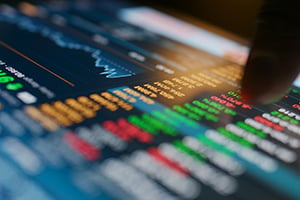 Earlier this week, I discussed what 2022 taught us about risk. Today, I want to talk about what I will be doing to manage risk in 2023, given those lessons.
Earlier this week, I discussed what 2022 taught us about risk. Today, I want to talk about what I will be doing to manage risk in 2023, given those lessons.
When I look at risk in my portfolio, I see two different things. The first thing is variability. When your portfolio is down 25 percent, that is variability risk—and it hurts. But the second and, in my opinion, better way to measure risk is with loss. Is that 25 percent loss a real loss or just a temporary blip?
Historically, it has been a blip, and the market has come back eventually. And I expect that will continue to be the case. But as I get older, “eventually” is an open-ended word that requires something more to manage it. I want to minimize that chance of loss, even as I recognize that the variability will pass.
Managing the Risk
So, what’s next? There are several ways to manage that variability risk—diversification and bucketing, among others—but personally, I manage variability risk using the portfolio I describe in my book, Crash-Test Investing.
On the whole, I have been pleased with the strategy. I prefer a smoother ride to a more exciting one, especially since we end up in about the same place, so I will keep using it. Additionally, I will likely start using a wider range of asset classes than the book specifies, as markets and interest rates are now more normally priced. Because of this, I am willing to take a bit more variability risk.
Focusing on Income
That’s not much of a change, but what I will be doing differently this year is paying more attention to a less variable component of investing, which is income. As I get older, I am becoming more focused on income generation rather than capital gains. And now that rates are more normal and stock valuations are lower, I am starting to consider investing in dividend-paying stocks.
What matters here is not so much the variability of the capital values, which can bounce around like any stock, but the variability of the income stream. If that doesn’t vary much, I can ride out the capital variability more easily. And since dividend stocks tend to bounce around less, that makes it even easier.
The Big Picture
Overall, I will be taking a bit more risk with stocks, but I will continue to manage that risk by trying to limit the downside and locking in a certain level of return by focusing on dividends. Once again, 2022 taught us that market risk is real, but it also showed us that if we plan for and manage that risk, we will still get to where we want to go. And I plan to continue doing just that in 2023.


 Print
Print

